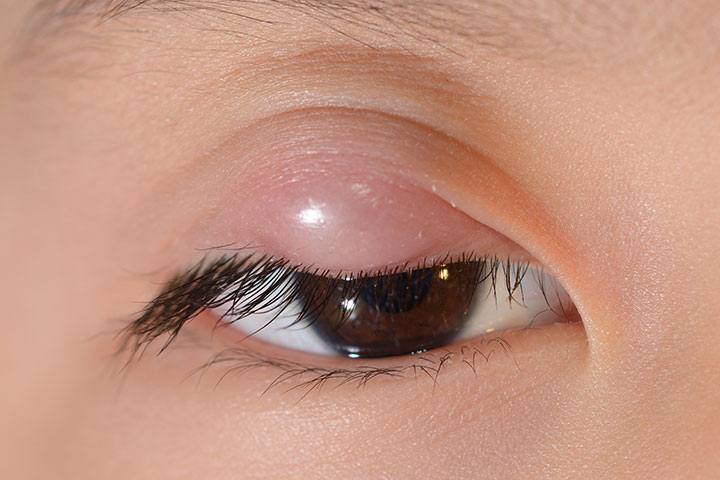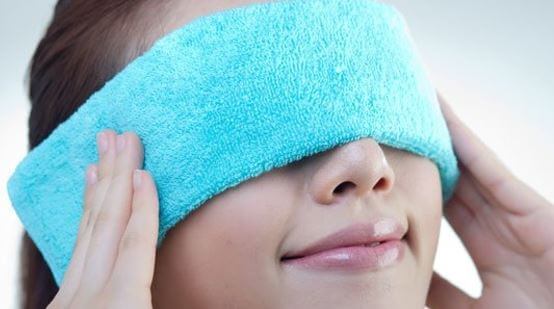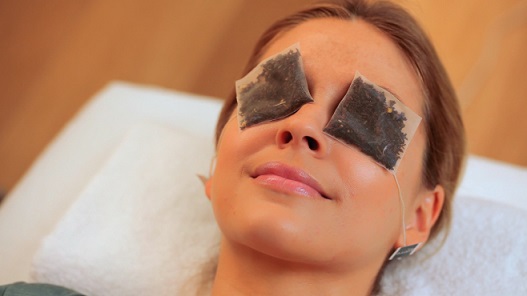Eye stye or sty in eye is also known as "external hordeolum". It refers to an acute pus forming infection of the sebaceous glands (of Zeis) or the sweat glands (of Moll) present at the base of the eyelashes. Usually, the infection is caused by bacteria (Staphylococcus aureus).
Eye stye is relatively more common in children and young adult, although it can occur in any age. Frequent rubbing of the eyes, poor personal hygiene and poor nutrition predisposes to eye stye. Eye cosmetics can also result in eye stye in certain conditions (e.g. improper removal, low quality or infected cosmetics, etc.)

Symptoms and Complications of Sty in Eye
The most common symptoms of eye stye are pain and swelling of the lid. It is often associated with mild watering from the eye and abnormal sensitivity to light (photophobia). Other less common symptoms that can be present are burning in the eye, foreign body sensation in the eye, blurring of vision and discomfort during blinking.
In eye stye, initially stage of cellulitis occurs. This stage is characterized by localized painful swelling at the lid margin. The stage of cellulitis is followed by the stage of abscess, characterized by appearance of visible pus point on the lid margin.
What Are the Possible Complications?
Eye stye usually resolves without any sequelae. Even without any treatment, eye stye generally resolves on its own in 7-10 days. Complications of eye stye are infrequent. Rarely, an eye stye may progress to form a chalazion (cyst in the eyelid, usually presenting as painless nodule). Chalazion requires removal by surgery. Eye stye may result in spread of infection to involve the entire eyelid (eyelid cellulitis). This is more likely if the eye stye is lanced or there is associated immune system dysfunction (AIDS, cancer, anti-cancer chemotherapy, diabetes mellitus, etc.)
Treatment and Prevention of Sty in Eye
Eye stye can be not only unsightly, but annoying and painful. In order to relieve and eliminate eye stye, you can take steps listed following.
1. Warm Compress
 Heat application to the affected area may help reduce inflammation and offer some relief. It helps get any pus out of your affected eye, which accelerates the healing process. You can use a commercially made warm compress or you can simply soak a clean cloth in hot water and place it over the affected area. Just ensure that the water is not very hot. Also, apply the compress for at least 5-10 minutes at a time. You have to repeat it at least thrice a day for relief.
Heat application to the affected area may help reduce inflammation and offer some relief. It helps get any pus out of your affected eye, which accelerates the healing process. You can use a commercially made warm compress or you can simply soak a clean cloth in hot water and place it over the affected area. Just ensure that the water is not very hot. Also, apply the compress for at least 5-10 minutes at a time. You have to repeat it at least thrice a day for relief.
2. Use Mild Soap and Water
Keeping the affected area clean is of immense importance and that is when you can use a mixture of water and soap. You can also add some of tear-free baby shampoo to warm water and use it to clean your eyelids with a clean washcloth. Be sure to do it daily until the stye is no longer visible. Regular cleaning also prevents formation of new styes. Instead of soapy water, you can also use a saline solution to clean your eyelid and prevent bacterial infections.
3. Opt for a Warm Tea Bag
 The idea is to apply some heat to the area to get puss out of your stye. You can use a black tea bag for this purpose because it has antibacterial properties as well. Simply place a teabag in boiled water and let it steep for a couple of minutes. Get the teabag out and let it cool down a bit. Now, place it over your affected eye for 5-10 minutes. Never use the same teabag on both eyes.
The idea is to apply some heat to the area to get puss out of your stye. You can use a black tea bag for this purpose because it has antibacterial properties as well. Simply place a teabag in boiled water and let it steep for a couple of minutes. Get the teabag out and let it cool down a bit. Now, place it over your affected eye for 5-10 minutes. Never use the same teabag on both eyes.
4. Do Not Wear Makeup
While your eye stye is still healing, you should avoid wearing any makeup. In fact, it is better to avoid wearing your contact lenses for a while. Makeup and lenses can irritate your eye and hamper the healing process. Also, you can infect your lenses and re-infect your eye when you wear them again after your eye stye has healed completely. It is better to wear glasses until you feel better or the infection has cleared completely. You should also wash your brushes and other items regularly to avoid transferring to those tools.
5. Other Remedies
- If the pus point is formed (stage of abscess), treatment is evacuation of the pus by epilating the involved cilia. Surgical drainage of the pus is necessary if the formed abscess is very large.
- To control infection, antibiotic eye drops 3-4 times a day and antibiotic eye ointment during bedtime should also be applied. NSAIDs (like acetaminophen) can also be used to relieve pain and reduce the inflammation.
- In case of recurring eye stye, treatment of the associated predisposing condition is also important. For e.g. if eye stye is occurring repeatedly due to diabetes mellitus, then better control of blood glucose levels is warranted to reduce the recurrence of eye stye.
- No attempt should be made to squeeze or prick the eye stye to remove the pus. This may result in spread of infection to the adjacent areas. Eye makeup and contact lenses should also be avoided when suffering from eye stye.
Adequate personal hygiene is the most important preventive measure. Sharing of personal items (towels, pillows, cosmetic items, etc.) with a person affected with eye stye should be avoided. Frequent rubbing of eyes (if itching) should be avoided and itching or irritation in the eye should be adequately treated with antibiotic eye drops.
When to See a Doctor
Presence of any of the following symptoms warrants an immediate medical attention:
- Swelling or redness involving an entire eye
- Vision changes
- Eye stye not resolving even after 3 weeks
- Recurring sty in eye
- If any of the symptoms are very severe (excessive pain, excessive discharge, etc.)
